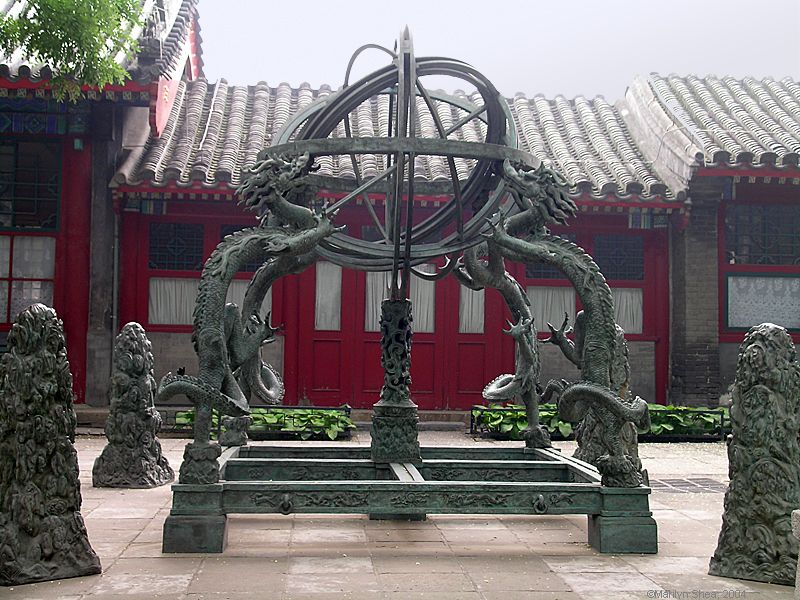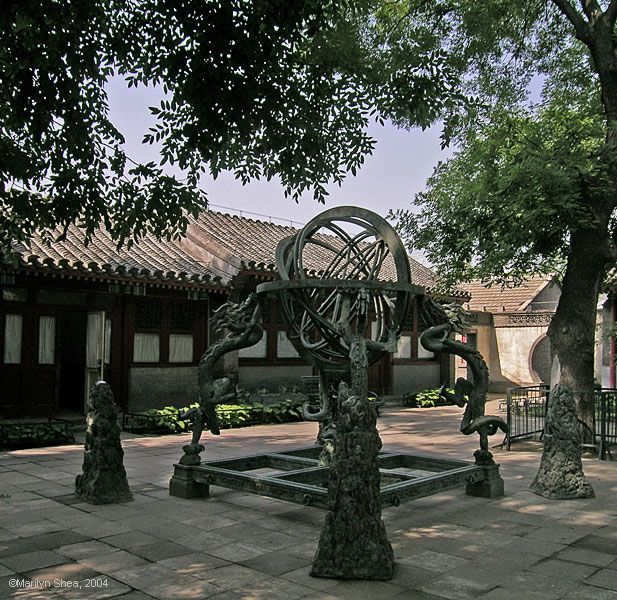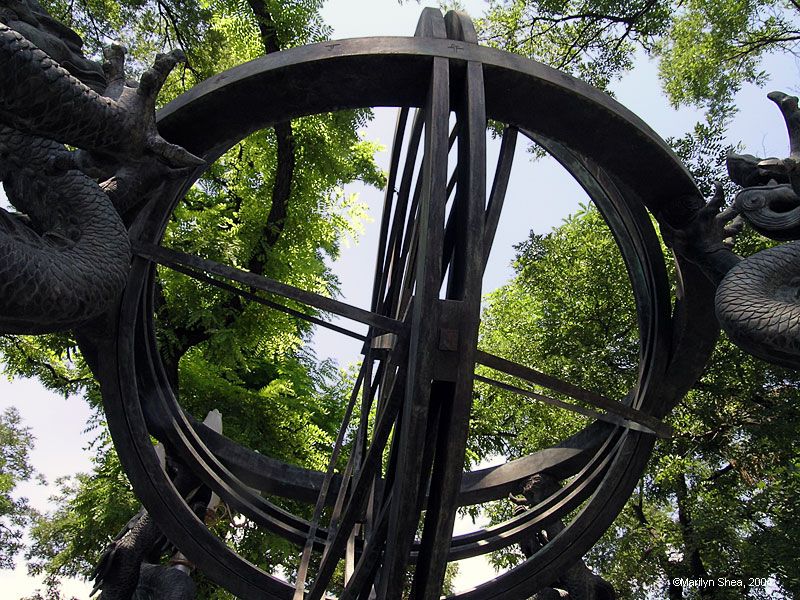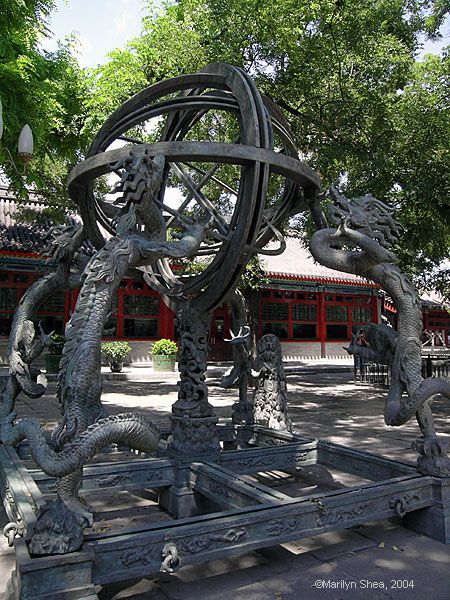 |
| The armillary sphere (hún yí 浑仪) in the courtyard of the Ancient Observatory in Beijing is a full sized replica of a sphere produced in the Ming Dynasty during the reign of Emperor Zhengtong (1439). The original was moved to the Purple Mountain Observatory in Nanjing in 1931.
The armillary sphere's structure was very simple at the beginning, with three rings and a metal axis. The axis was oriented to the North and South Poles. The outermost ring, the meridian ring, was fixed in the north-south direction. The middle ring, the equatorial ring, was aligned to the earth's equatorial plane. Finally, the innermost one, the Chijing ring, had a sighting tube and could revolve around the metal axis. To use the armillary, one pointed the sight at a particular star and then you read the angles off the different rings to identify the exact position of the star. Later, more rings were added to take different measurements, so that the modern examples from the Ming dynasty are much more elaborate than the originals. On the base of the armillary you can see a shallow trough in the square base. This was filled with water to level the instrument. A method to attach a plumb line might also have been available since it was a common instrument, but it is not immediately apparent. |
 |
 |
 |
 |
 |
| Each of the four mountains surrounding the armillary is marked with a symbol from the I Ching, or Book of Changes, (易经 Yì Jīng 周易 Zhōu Yì ). Each of the eight trigrams in the I Ching also stands for a direction. The mountains stand at the ☰ 乾 qián northwest, ☴ 巽 xùn southeast,☶ 艮 gèn northeast, ☷ 坤 kūn southwest corners. The symbol pictured above is 乾山 Qián Shān or northwest. It is the symbol for heaven in the I Ching. |
The Eight Trigrams and their directions are:
| NorthWest | West | South | East | Southeast | North | Northwest | Southwest |
| ☰ | ☱ | ☲ | ☳ | ☴ | ☵ | ☶ | ☷ |
| heaven Qián |
marsh Duì |
fire Lí |
thunder Zhèn |
wind Xùn |
water Kǎn |
hill Gèn |
earth Kūn |
| The I Ching, or Book of Changes, or, as it is translated today, Classics of Changes was compiled from writings and beliefs that predate the Xia Dynasty. While traditionally attributed to Fú Xī (伏羲), discoveries on oracle bones place its beginning much earlier. The inclusion of the symbols on the armillary shows the close ties between the traditions of astrology and astronomy. |
 |
 |
http://hua.umf.maine.edu/China/beijing2.html
Last update: September 2007
© Marilyn Shea, 2007